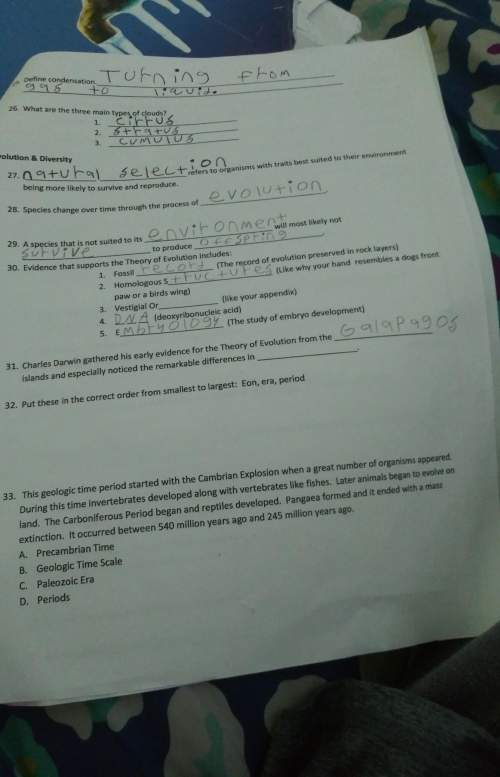
Physics, 20.08.2019 21:20 hbhdnjdndj1867
Acylindrical beam of particles each with charge q and mass m has a uniform initial (charge) density p and radius r. each particle in the beam is initially traveling with velocity v parallel to the beam's axis. consider the stability of this beam by examining the forces on a particle traveling in the beam at a distance r < r from the axis (the center of the cylinder). find the approximate force on a particle at radius r caused by the other particles in the beam. you will need to use gauss's law to calculate the electric field at radius r. describe your work, and do not skip steps; show that you understand gauss's law.

Answers: 2
Another question on Physics

Physics, 21.06.2019 22:30
Matt is driving down 7th street. he drives 150 meters in 18 sec. assuming he doesn’t slow down or speed up, what is his speed?
Answers: 1

Physics, 22.06.2019 13:10
The bar of prob. 5/82 is repeated here. the ends of the 0.4-m bar remain in contact with their re- spective support surfaces. end b has a velocity of 0.5 m/s and an acceleration of 0.3 m/s2 in the di- rections shown. determine the angular accelera- tion of the bar and the acceleration of end a.
Answers: 3

Physics, 22.06.2019 13:30
6–43 a food department is kept at 2128c by a refrigerator in an environment at 308c. the total heat gain to the food department is estimated to be 3300 kj/h and the heat rejection in the condenser is 4800 kj/h. determine the power input to the compressor, in kw and the cop of the refrigerator.
Answers: 2

Physics, 22.06.2019 18:00
Cells in the nervous system have a potential difference of 70 mv across the cell membrane separating the interior of the cell from the extracellular fluid. this potential difference is maintained by ion pumps that move charged ions across the membrane. is this an emf? select the correct answer and explanation. 1)no. the ion pumps cannot separate charges; thus, they cannot create a potential difference. 2)yes. the ion pumps cannot separate charges, but they still can create a potential difference. 3)yes. the ion pumps can actively separate charge; thus, they can create a potential difference. 4)no. the ion pumps can separate charges, but they cannot create a potential difference.
Answers: 1
You know the right answer?
Acylindrical beam of particles each with charge q and mass m has a uniform initial (charge) density...
Questions


Mathematics, 04.11.2021 14:00







Mathematics, 04.11.2021 14:00


English, 04.11.2021 14:00

English, 04.11.2021 14:00

Biology, 04.11.2021 14:00

Mathematics, 04.11.2021 14:00


Mathematics, 04.11.2021 14:00

Health, 04.11.2021 14:00

Mathematics, 04.11.2021 14:00






